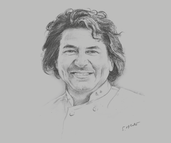Gastón Acurio, Chef and Restaurateur: Interview

Interview: Gastón Acurio
What makes Peruvian cuisine so distinctive?
GASTON ACURIO: The uniqueness of Peruvian cuisine is the result of the country’s vast diversity and history. Over thousands of years our ancestors adapted to our geography and climate, modifying their agricultural techniques to strike a balance between their needs and those of the local environment. Ancient Peruvians had a very close and respectful relationship with nature’s basic elements – water, sun and earth. Modern Peruvians have come to encompass a mix of indigenous cultures, Spanish colonisers and the many immigrants, including Italian, Japanese, Chinese, Jewish, Arab and African arrivals, and Peruvian cuisine as we know it today is a reflection of that. These communities are tightly interconnected, resulting in an environment where dishes have come to heavily influence each other. I am myself a Limeño (a Lima native), whose father’s family came from the Basque Country in Spain and settled in the Andean city of Cusco, while my mother’s relatives came from the western Spanish region of Extremadura and migrated to Trujillo. When we discuss our food, we are speaking about our families and about love, about how Chinese ingredients were mixed with Italian pasta, about adding parmesan cheese to soy sauce. Both in homes and restaurants, we were able to combine Peru’s indigenous cultures with the innovations and ingredients of colonisers and migrants.
Why do you think Peruvian cuisine has reached such a high level of acclaim and success globally?
ACURIO: For a long time Peruvians tried to hide their multicultural origins. We thought we needed to be more European, and that our mixed backgrounds would deny us opportunities. I wanted to prove to our people that we have a beautiful cuisine that deserves to be celebrated around the world. We are not saying our cuisine is better than France’s, Spain’s or Italy’s, but instead we are using it as a wonderful way to discover and celebrate the enormous amount of diversity in our world. We knew that if we opened Peruvian restaurants abroad – beautiful restaurants with comfortable seating and modern plating in trendy locales – it would be like opening little Peruvian embassies all over the world. We have managed to turn Peruvian cuisine into something universally enjoyed across the globe. It is nowadays possible to find Peruvian ceviche and tiraditos (raw fish dishes) in a restaurant menu in Madrid – something unthinkable just 25 or 30 years ago. When I started this project in the mid-1990s, having initially featured French dishes in my recently opened restaurant, most people thought I was delusional and that the project would fail. This dream only came true because chefs around the world made it possible. Some years later, I began to reach out to other Peruvian chefs on the scene and asked them to join me in the mission of bringing our food to the four corners of the globe. We decided as a community of chefs to take Peruvian cuisine to the world. A number of markets in Lima have also begun exporting Peruvian agricultural produce.
How did this food revolution help change the image of Peru both domestically and abroad?
ACURIO: The relevance our cuisine has gained over the years has not only helped boost the country’s reputation internationally, but also increased the number of tourists coming to Peru to seek out both the culinary opportunities as well as the immense cultural, ecotourism and adventure experiences on offer. Before this, there were no tours in Lima, and the city was largely deserted during major holidays as no foreign tourists would venture here themselves and Limeños would escape to the beaches. I knew that one of the best weapons we had to convince people to visit our country was the food. The success of our cuisine has inspired many youths in Peru to become chefs and, more importantly, to be proud of their identity. Our achievements abroad have brought a feeling of both unity and pride among Peruvians that had been lost for many years.
You have reached the limit of premium articles you can view for free.
Choose from the options below to purchase print or digital editions of our Reports. You can also purchase a website subscription giving you unlimited access to all of our Reports online for 12 months.
If you have already purchased this Report or have a website subscription, please login to continue.

